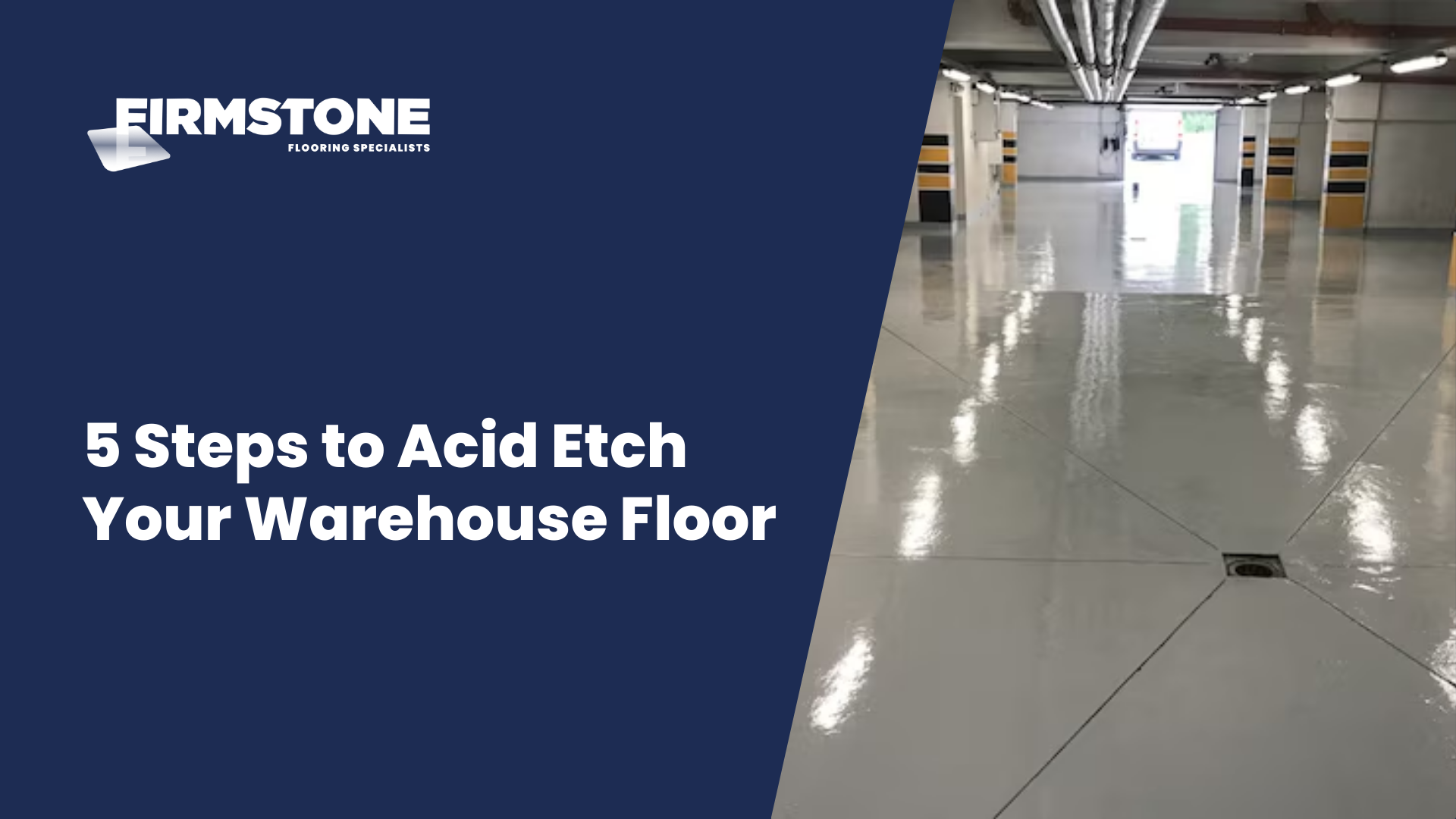
Acid etching a warehouse floor requires careful planning and precise execution to achieve ideal results. The process transforms smooth concrete into a properly textured surface that's ready for coating or sealing. While the task may seem intimidating, breaking it down into five manageable steps makes it more approachable for facility managers and contractors. Understanding these critical steps helps guarantee safety, efficiency, and professional-grade outcomes in this essential surface preparation technique.
Every successful acid etching project begins with proper safety precautions and surface evaluation. Workers must don appropriate safety gear, including chemical safety glasses, gloves, and protective long sleeves before handling any acidic materials.
A thorough inspection of the warehouse floor reveals critical surface conditions that require attention. Areas contaminated with grease and oil need treatment with a degreaser, while existing coatings must be removed through mechanical methods before the etching process can begin.
Testing the concrete's moisture content is essential, ensuring levels remain below 3% for ideal results. The work environment must be well-ventilated to dissipate harmful fumes during application.
These preliminary steps create the foundation for effective acid etching and help prevent potential complications that could compromise the final results.
For heavily contaminated surfaces, diamond grinding provides an effective method to remove surface imperfections and create an optimal substrate for the etching process.
Thorough floor cleaning and degreasing lay the groundwork for successful acid etching.
The process begins by clearing the warehouse floor of all furniture and equipment to create an unobstructed workspace.
A commercial degreaser or a combination of laundry detergent and hot water is applied to the concrete surface to break down oil, grease, and accumulated grime.
Using a stiff brush or floor scrubber, the surface is vigorously scrubbed to eliminate all contaminants that could compromise the etching process.
The floor is then thoroughly rinsed with a hose or pressure washer to remove all cleaning agents and debris, maintaining adequate moisture without pooling water.
Before proceeding with acid etching, the surface must dry completely to guarantee proper adhesion of subsequent coating applications.
After ensuring a clean and dry surface, proper preparation of the acid etching solution requires precise measurements and careful handling techniques.
The recommended mixing ratio combines 3 parts water to 1 part muriatic acid, with a typical mixture being 1.5 gallons of water to 0.5 gallons of acid.
For safety and proper chemical reaction, always add acid to water in a plastic container, never metal.
Before full application, it is crucial to test the strength of the acid solution on a small, inconspicuous area of the concrete floor.
The appearance of bubbling and foaming indicates effective etching. If no reaction occurs, this suggests the presence of a sealer that must be removed before proceeding with the etching process.
One gallon of properly mixed solution typically covers 50-70 square feet of concrete surface.
Distributing the acid etching solution demands careful attention to technique and timing. The application process requires using a plastic sprayer or watering can to achieve even coverage, maintaining a slightly damp concrete surface throughout the procedure. This method prevents solution pooling and guarantees uniform etching.
During the acid etch process, the surface will exhibit bubbling and foaming, indicating an active chemical reaction. This reaction typically lasts between 2 to 15 minutes.
Once the bubbling subsides, thoroughly rinse the surface with clean water while scrubbing with a brush to achieve complete neutralization. To verify successful etching, perform a water penetration test by applying several drops to the treated area. Quick absorption indicates proper etching, while beading suggests the need for additional treatment.
Proper neutralization follows the acid etching reaction to restore the concrete's pH balance and prepare it for coating.
A neutralizing solution can be prepared using either 4 cups of baking soda or 4 ounces of ammonia mixed with 1 gallon of water.
The solution should be applied evenly across the acid-etched concrete and allowed to sit for at least 10 minutes to guarantee complete neutralization.
Following this, thorough rinsing with clean water using a high-pressure nozzle and scrub brush is essential. The rinse water should be directed to appropriate drainage systems to prevent environmental contamination.
Testing the pH of the surface is vital; readings should fall between 6.0 and 9.0, with 7.0 being ideal.
Multiple rinses may be necessary until the desired pH level is achieved.
Successful acid etching of warehouse floors requires strict adherence to safety protocols and proper execution of each step. From initial surface preparation to final neutralization, this systematic approach guarantees ideal results while protecting workers and equipment. When done correctly, acid etching creates a properly profiled surface that enhances coating adhesion and extends the life of warehouse floor treatments.